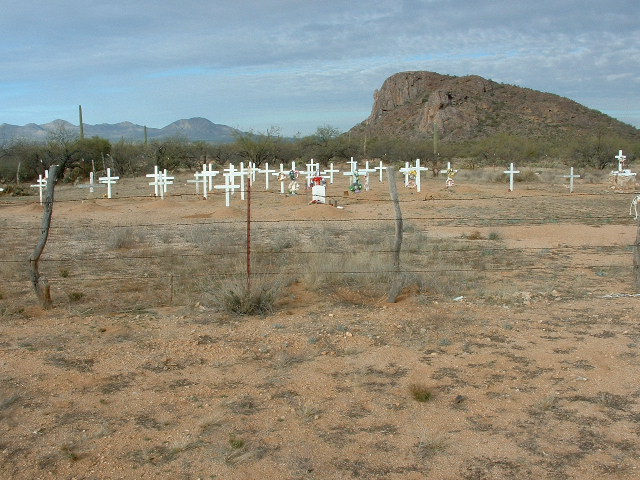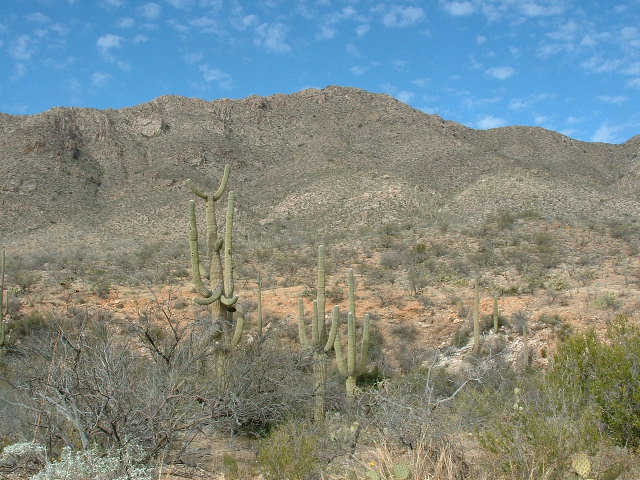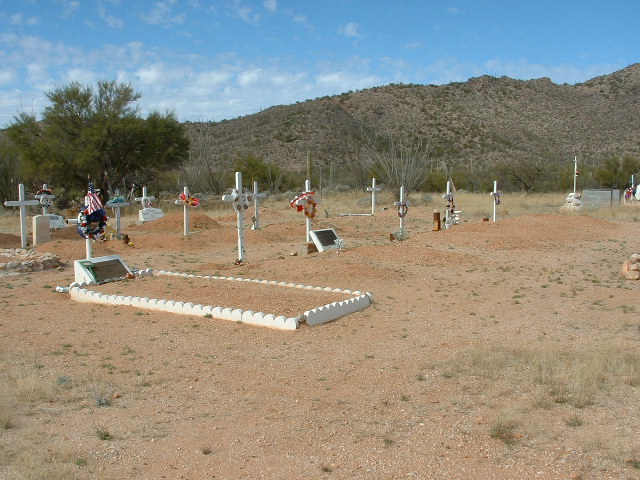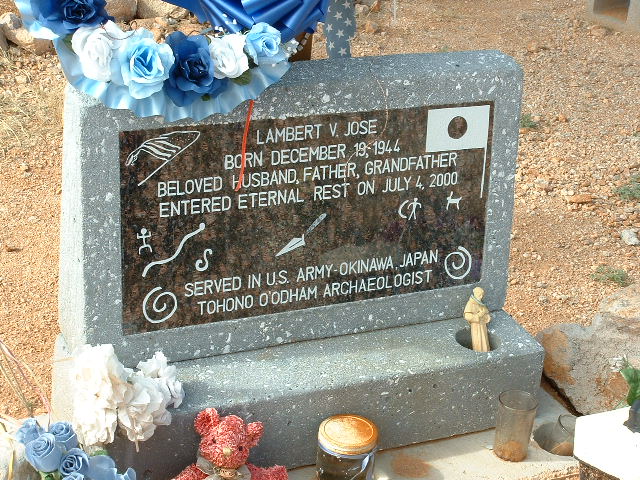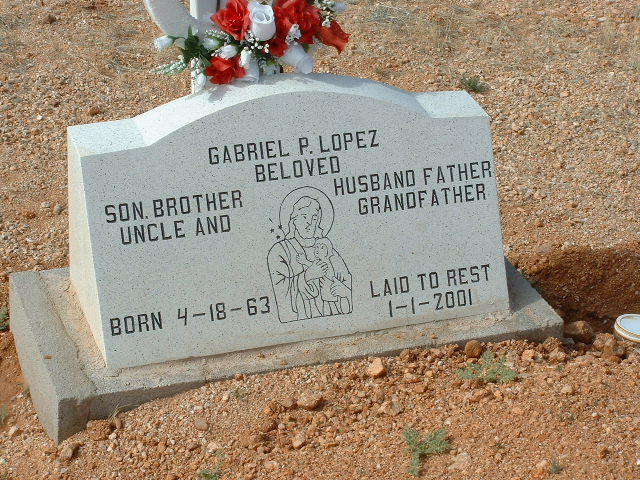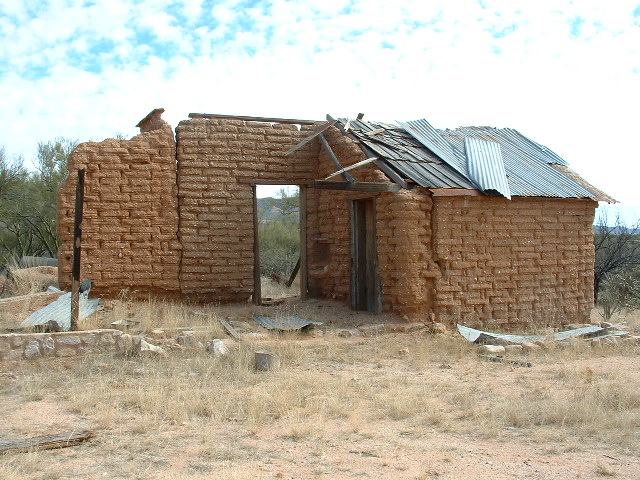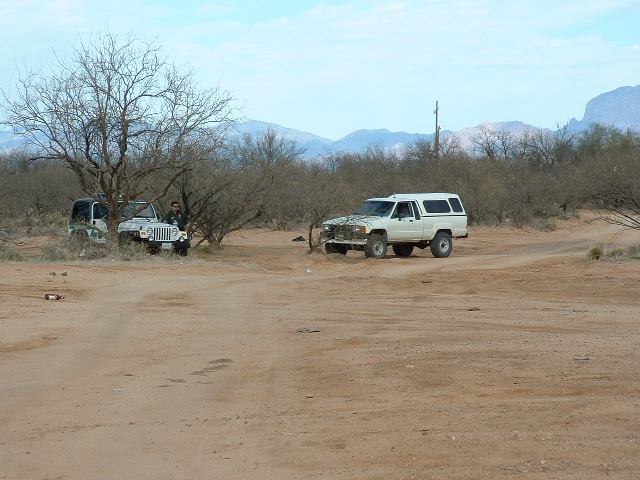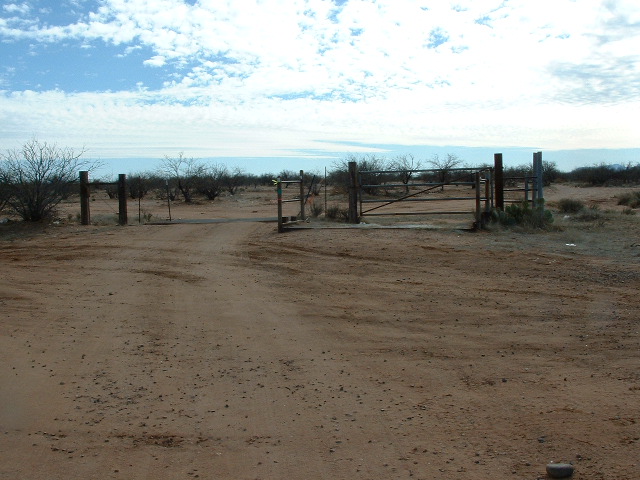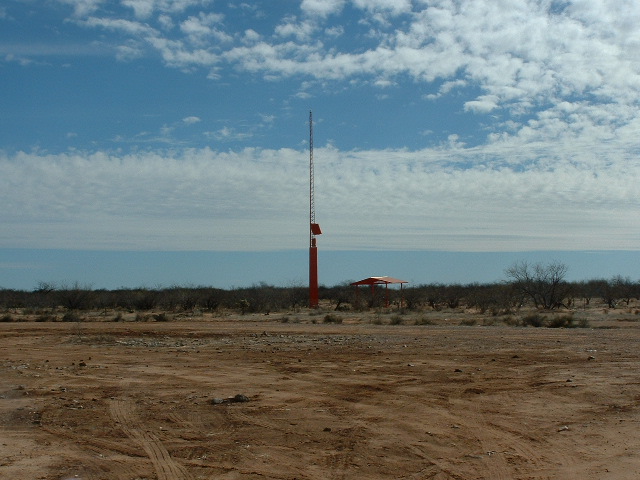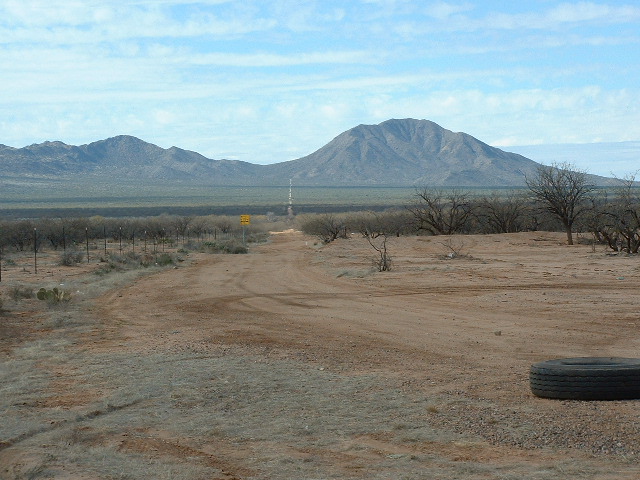Not long ago, on a whim, I decided to go to Buenos Aires. But not the one you’re thinking of, down in Argentina – I wish! No, it’s the one out on the Tohono O’odham Indian Reservation. I left my house in Tucson pretty early and drove to Sells, the administrative capitol of the T.O. nation. The town was still sleeping as I drove through it and headed south on Indian Highway 19. I drove all the way to the village of San Miguel (which is just 5 miles from Mexico), then east on dirt roads to the peak known as Nachi Kulik. I’m not sure what this name means in the T.O. language. While ascending the west side, I encountered a series of rock walls, seven of them. They were from 3 to 5 feet high and up to 200 feet long. They were made of loose stones gathered from the hillside, and fitted together by hand. The T.O. built these as defenses against marauding Apaches. I have seen these on other peaks – they must be at least 150 years old, and possibly much older. It is always so amazing to see these walls – the human effort that went into building them must have been staggering. What a credit to their builders, that they were built with no tools of any kind – the stones were carefully fitted together by hand, and the walls are still standing centuries later. For many years, I made my living as a builder, and I can assure you that no wall we can build with today’s technology will be still standing centuries later if left untended. Just amazing!
After that climb, I drove southeast for several miles, down to the border. I climbed Peak 4603′, the southernmost one in the Baboquiviri Mtns. From it, you can clearly see the distinction between the Pozo Verde Mountains and the Baboquiviri Mtns., Presumido Canyon acting as the boundary between them.
I left Peak 4603′, a nice steep 1300-foot climb, and drove to the abandoned village of Buenos Aires which sits right on the Mexican border. There is a cemetery nearby.
It is interesting how so many of these abandoned villages have well-tended cemeteries. You might expect them to have fallen into ruin, but the opposite is in fact true. Relatives of the deceased look after them with loving care. Another interesting fact is that many of the tombstones bear dates showing that the deceased was buried there long years after the village was abandoned. Perhaps out of respect for the dearly departed, the surviving family members choose to bury them in the village where they were born or raised. That says so much about the O’odham sense of place and the value they place on family and roots.
Besides the cemetery, about all that is left of the village of Buenos Aires are some crumbling adobe ruins.
Another curious thing that can be seen here is a border monument on a little hill next to the village. It is just southwest of the windmill shown at elevation 3004′. I find it interesting that this monument is not shown or numbered on the quad, but am certain that it is Border Monument 142.
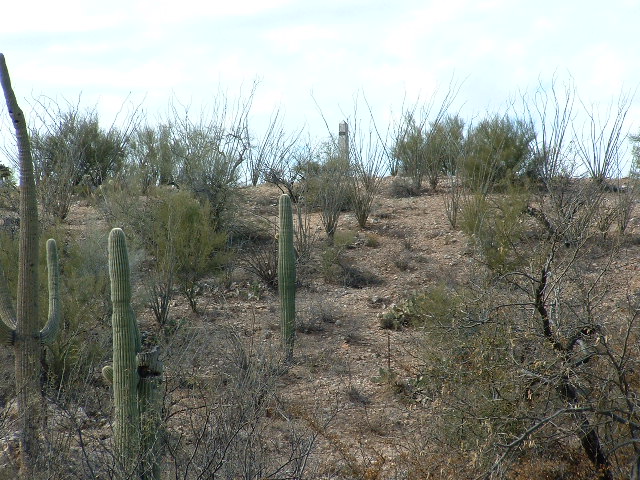 I drove west from there on a dirt road a few thousand feet north of the border, and came out at the village of Newfield, which consists of just a few homes where the paved highway begins. I drove west on this highway for 2 miles, to where it turns sharply north and heads back to Sells. Then, I did something I have wanted to do for many years. The topographic map shows something there at the border called “The Gate”. I have always wondered what the heck that was, so I drove the 200 yards of good dirt road from the highway and came up to the obvious fence at the international border. Sitting there, parked under a tree, was a Border Patrol jeep. I parked and approached it on foot.
I drove west from there on a dirt road a few thousand feet north of the border, and came out at the village of Newfield, which consists of just a few homes where the paved highway begins. I drove west on this highway for 2 miles, to where it turns sharply north and heads back to Sells. Then, I did something I have wanted to do for many years. The topographic map shows something there at the border called “The Gate”. I have always wondered what the heck that was, so I drove the 200 yards of good dirt road from the highway and came up to the obvious fence at the international border. Sitting there, parked under a tree, was a Border Patrol jeep. I parked and approached it on foot.
A young Border Patrol officer came out of the jeep. I introduced myself, told him that I was climbing in the area, and we proceeded to talk for 45 minutes. He was most pleasant, and answered every question I had. Here are some of the things he told me.
The Border Patrol has a man stationed there all day, every day. In the morning, members of the Tohono O’odham who live in Mexico will drive up to The Gate and drop their kids off on the Mexican side. The kids then simply walk across the border into the U.S. and a school bus picks them up and takes them to Tohono O’odham schools in Topawa and Sells for the day. At the end of the day, the school bus drops the kids off again at The Gate and they walk across the border to where their waiting Mexican families take them home. The Gate is never locked. It is just a cattleguard.
Mexican members of the tribe have ID cards, issued by the Tohono O’odham nation, which the Border Patrol recognizes and honors. They are allowed to enter the U.S. to shop and obtain free medical services and use the schools. Also, U.S. members of the tribe freely go into Mexico to buy beer and tequila and bring it back into the US, because officially the reservation is dry (no alcohol can be sold there). On weekends, Mexican tribal members set up food stands and sell all manner of traditional hot dishes to U.S. tribal members who like to go there and buy such things. I am confident that there is no other place along the U.S. – Mexico border where government authorities allow such unhindered cross-border traffic. Historically, there is precedent for this. Before the Gadsden Purchase of 1853, a big chunk of southern Arizona and southwestern New Mexico was part of the country of Mexico. Once the purchase occurred, that land became part of the U.S., and an international border essentially cut the land of the Tohono O’odham into two parts. Family members then found themselves living on opposite sides of the border. However, for all practical purposes, the border was ignored in the T.O. tribal lands. I am delighted that the Border Patrol respects the rights of the tribal members on both sides of the border.
There is also an antenna there on the Mexican side. It has an emergency call feature on it. If a Mexican is in distress from the heat while trying to sneak into the US, he need only press the button to call, and members of Grupo Beta, a Mexican organization which rescues people in need, come there to help them out. I don’t know how far or from what town they come. I have also heard criticism of Grupo Beta, that their main goal may be to assist entrants to actually cross the border, rather than simply giving aid to those in trouble on the Mexican side.
The next picture shows the border swath, which is basically a dirt road on the US side of the fence. You are looking west and Mexico is on the left, the US is on the right side. The swath goes over to the shoulder of Horse Peak, right on the border, as you can plainly see. I asked the BP agent if I could drive their road to go over to climb the peak. He said I could, anytime. The BP maintains the road. I’ll be back there soon!
I said goodbye to him and headed north on the highway. Just a few miles later, on the east side of the hwy, I saw a large Border Patrol encampment. There was a huge camoflaged tent, many vehicles large and small, and even porta-potties. As I continued north, I reached the village of Choulic. On a whim, I pulled in to the village and drove to a house I knew years ago. Lo and behold, I found there the fellow who acted as my companion back in the 1980s when I first climbed the range high points on the reservation. I hadn’t seen him in over 15 years. We recognized each other immediately. What a great reunion we had! He said he had often wondered what had happened to me. He also said he cannot pass any mountain range on the reservation without remembering the climb he did of it with me. He introduced me to his wife and several children (all new since I had known him). It was like meeting a group of old friends, as he had told them all about me.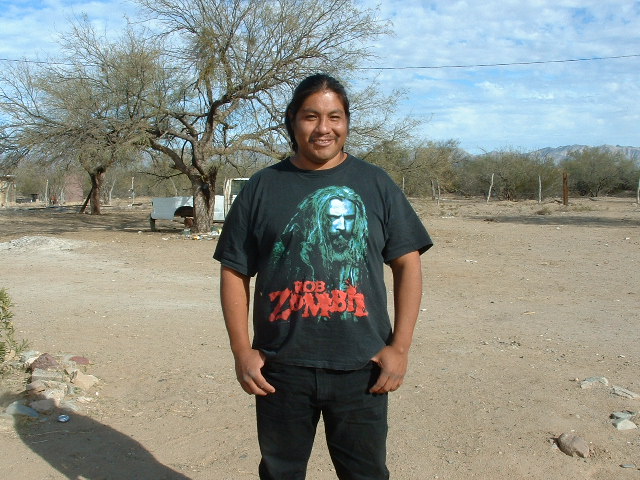 He asked them, “Do you remember that crazy white guy mountain climber from Tucson I’ve told you about? This is him!” We all laughed and joked around. It was a real kumbaya situation. The last picture shows my old friend Nathaniel Harvey, now 35 years of age. And guess what – his 10-year old son wants to go climbing! Obviously the climbing he did all those years ago made a good impression on his son. Who knows, maybe we’ll all go climbing together some day.
He asked them, “Do you remember that crazy white guy mountain climber from Tucson I’ve told you about? This is him!” We all laughed and joked around. It was a real kumbaya situation. The last picture shows my old friend Nathaniel Harvey, now 35 years of age. And guess what – his 10-year old son wants to go climbing! Obviously the climbing he did all those years ago made a good impression on his son. Who knows, maybe we’ll all go climbing together some day.
I said goodbye to them all and drove back home to Tucson, filled with good thoughts of the day and the Tohono O’odham nation that I love.
Please visit our Facebook page at https://www.facebook.com/pages/Desert-Mountaineer/192730747542690

